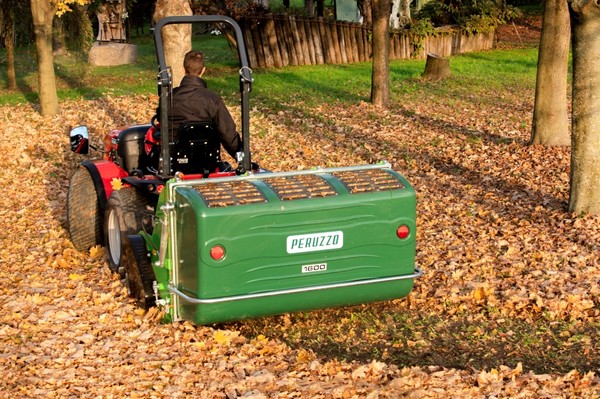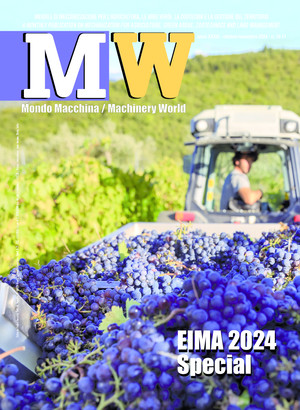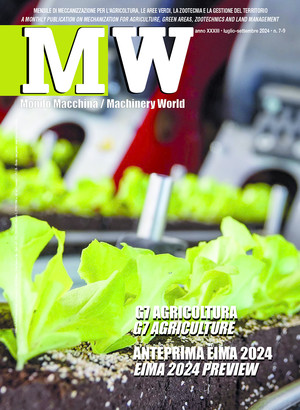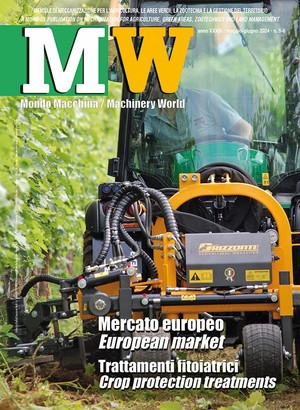
Technologies for urban green waste management
The residues produced by the maintenance of urban greenery are a resource. The material of which they are composed is in fact biodegradable and can be used for different purposes, such as different types of mulching, composting and energy use
The residues of green, depending on their nature, are normally divided into three categories: cellulosic, consisting of residual grass from the cuts of turfs and lawns, as well as dead leaves; lignocellulosic, resulting from the pruning of hedges, shrubs and trees; lignous, produced by pruning and felling of trees. The goal, on the one hand, is to reduce the quantity at the origin, on the other to consider them not a waste but a resource and, therefore, to enhance them. This is because the material that makes them up is biodegradable so, from the perspective of the circular economy, they can be recycled.
Reduction of quantity at origin. According to the relevant surveys, the quantities involved, especially for cellulosic and lignocellulosic residues, often dispersed, are significant. The dead leaves produced by a tree are on average equal to a volume of 150-180 m3 per 1,000 trees. The amount collected depends on the system and frequency of collection. The fall of the leaves is scalar and, even with the differences related to the species, in Italian regions for deciduous trees goes from September to December. With the onset of low temperatures, the fall increases in intensity. For conifers, the fall of needles lasts from spring until autumn and increases significantly on windy days. In high-frequency prestigious areas, and in tourist centres, the collection is generally more scrupulous and can reach 18-20 interventions per year. A not inconsiderable and onerous commitment. Also important is the amount of grass coming from turf. The average annual value is around 18-20 m3 per hectare, with strong variations related to the type of turf and the machines used. From the zero value of shaving performed with mulching machines, it rises to 4-5 m3 for low-frequency cutting turf, to exceed 25 m3 for high-frequency turf. Again, the harvest period lasts for a few months, on average from May to October. The amount of twig coming from tree pruning varies from 140 to 250 m3 per 1,000 trees, depending on the species and type of pruning. Production is concentrated in autumn and spring. In the case of hedges the values are of the order of 4.5-5.0 m3 per 1,000 linear metres and the harvest is in line with that of pruning the trees.
To reduce the quantity of green residues at the origin, action can be taken on the choice of essences and the quality of maintenance interventions. For turf it is necessary to reduce the number of mowing operations, through the choice of slow-growing essences or, on the contrary, let the grass grow by performing 2-3 mowings a year, or even practicing grazing. The use of mulching-effect shaving interventions, while necessarily frequent, allows natural recycling on site. In floral carpets, the use of prolonged blooms limits the harvest to the replacement of the floral composition. In the maintenance of shrubs, size, growth patterns and age should be considered, with the aim of limiting pruning. For trees you must focus on free or semi-free forms and not on compulsory ones, avoiding, in any case, topping.
Recycling and enhancement. Along with green recovery, it is also necessary to carry out classification and separation between inert material and material hazardous to humans and the environment. The mixture of a polluted material, for example leaves with a high pesticide residue, with an inert one, makes the whole mixture non-recyclable. The first form of recycling of cellulose residues, without any transformation, is mulching carried out with dead leaves and grass from mowing turfs. Mulching, especially with natural material, brings several advantages: it promotes microbial life in the soil and on the surface, conserves moisture, reduces the birth of weeds, protects the roots from frost. Mulching with the leaves should be done by layering them on the ground, or around the plants, for a thickness of about 10 cm. Linden and ash leaves degrade fairly quickly while others, such as oak leaves, take longer. Pine and cedar needles are ideal for mulching acidophiles, such as azaleas, rhododendrons, hydrangeas, etc. Fresh grass from mowing turfs is also an excellent mulching material as it is rich in nitrogen. The grass should be distributed in a thin layer of 1-1.5 cm to avoid harmful fermentation phenomena. Obviously should not be used grass from turf treated with pesticides, as they can pollute the soil. This mulching material, leaves and grass, over time degrades and can be incorporated into the soil bringing organic carbon. The recycling of lignocellulosic and woody material passes through the operation of shredding or chipping, with the production of fragments of various sizes. Freshly produced material can be used for mulching in the garden and vegetable garden. Coniferous wood chips contain elements that make them resistant to cold and disease but can have an allelopathic effect on plants. It should therefore not be placed near the roots, while it can be used in the walkways of the vegetable garden. Another possible use may be for paving children's play areas in gardens. In this case, the wood chips, which are around 3 cm in size, must be seasoned for at least two years and have a moisture content of less than 15 per cent. Wood chips obtained by chipping can enter the supply chain for energy production. Another type of recycling concerns the transformation into compost, with material from bio-shredders.
The machines. Blowers, vacuum cleaners and brush-collectors are used for leaf collection. Blowers are very simple machines, consisting of a fan, driven by an electric or endothermic motor that creates the air current needed to move the leaves, and a tube with which to convey them into heaps that will later be picked up with a bucket or other system. The air speed must be very high, i.e. even above 300 km/h, so that even wet leaves adhering to the ground or paved surfaces can be removed and conveyed. From hand-carried models, the range is extended to wheeled, trailed or self-propelled models. Electric hand blowers powered by lithium-ion batteries are becoming increasingly popular. Range depends on the battery charge. The blower/vacuum models allow two possibilities of use. In the suction version the equipment includes the leaf collection bag. The suction system can also be combined with leaf shredding. For vacuum cleaners used for the collection of large volumes over large areas, the motor-suction unit, driven by the PTO of a tractor, is mounted on a cage trailer into which the sucked leaves are conveyed by an operator-operated hose. There are also self-propelled versions. Brush-collecting machines are generally self-propelled machines, equipped with rotating brushes and a suction system for direct loading into a hopper.
For the recovery and transformation of lignocellulosic and woody residues, the machines used are bioshredders and wood chippers. Bioshredders are mainly used for shredding branch with leaves. They produce a small frayed wood chip, which can be used for mulching or making compost. The classic cutting organ is a drum carrying knives which, in rotation, touch a fixed counter-blade. Wood chippers mainly treat branches of certain sizes, without or with few leaves, and trunks. They produce even coarse, but usually well-calibrated flakes, called chips, which can be used for mulching or for burning. The chipping organ normally consists of a vertical disc carrying two or more knives. Both types can have autonomous engines of different power ratings, or be driven by the power take-off of a tractor.








